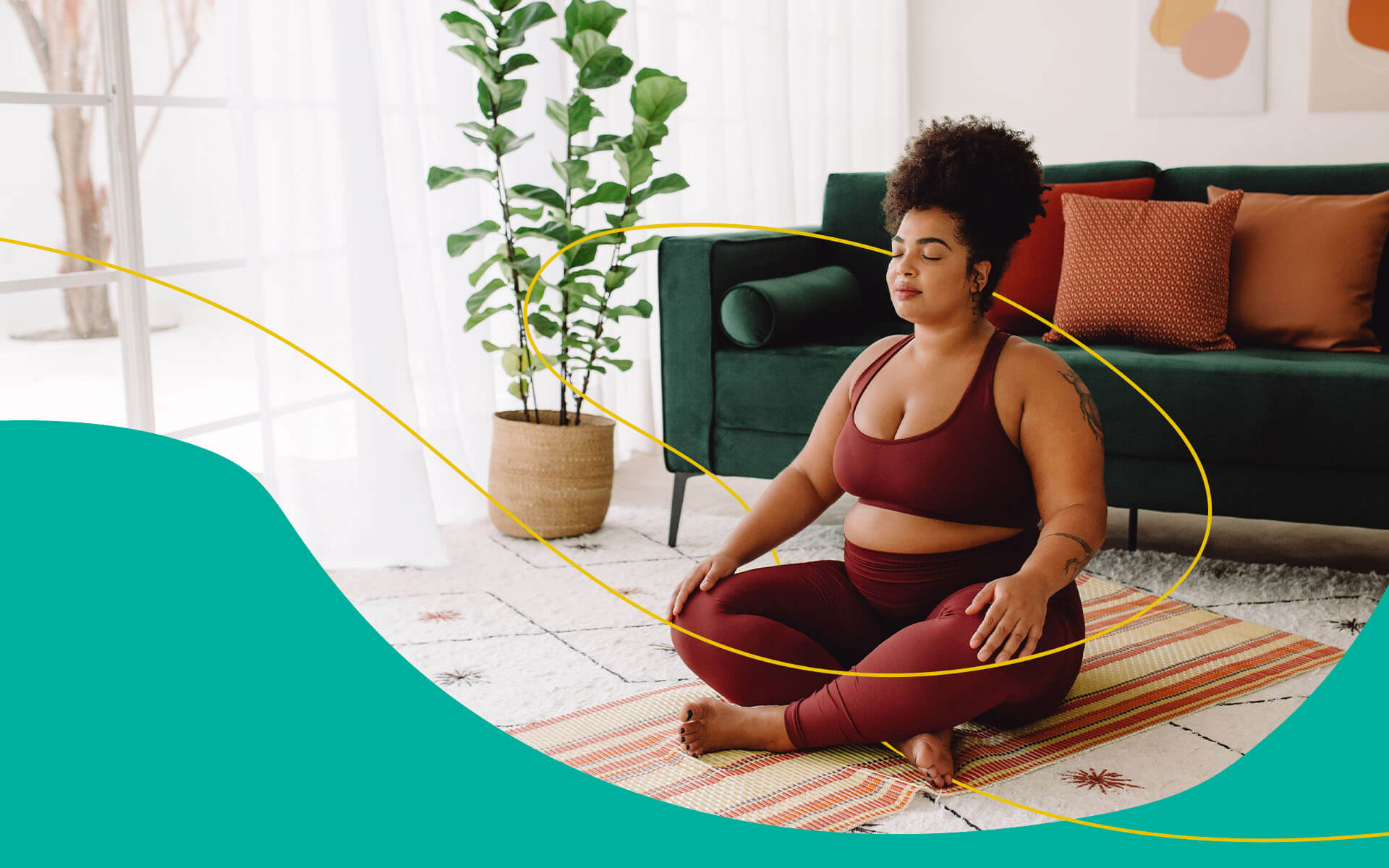
Body + Mind is reader-supported. We may earn an affiliate commission when you buy through some of the links on our site.
There are lots of things in this world that can impact our mental health. Perhaps you’ve been considering trying out meditation to help you practice mindfulness, calm yourself and improve your focus, but you’re skeptical about whether or not it really works.
Well, we’re about to bust open seven myths about meditation and mental health that you may have not even realized you believed.
Both of these are actually very false. As long as you are keeping your spine straight, then you can sit however you would like to. Get comfortable!
If you need to use a wall or chair to keep your back straight, do that. If you don’t want to cross your legs or can’t get on the floor, you don’t have to. Heck, you can even meditate laying down if you would like, but know that it is extremely easy for beginners to get tired.
Also, you don’t have to close your eyes while meditating. Jacqui Lewis of The Broad Place told Huffington Post Australia that, “meditating with your eyes open can mean focusing the attention or gaze on a candle flame or looking out into a horizon line.”
Essentially, you can perform your meditation by focusing your gaze on a specific item. There are many other ways to meditate with your eyes open, too, which you can explore for yourself in “Meditating With Your Eyes Open.”
Not all meditation requires you to be absolutely still. There are many meditation techniques that call for movement, such as walking, eating, drawing or writing. Movement meditation practices can include anything that allows your mind to take a break, step away from certain worries and relax for a second.
Elysha Lenkin, of Fit Bottomed Girls, goes through five different movement meditation practices that are great for not only clearing your mind but also working your body. These include dancing, running, walking, shaking and cleaning.
Another nice thing about movement meditation is that it gets your mind focused on something other than your problems or situations at hand. One could say that it is a meditation characterized by doing mindless activities, or activities that have a clear end or goal.
Once again — nope! Putting off meditation because you can’t find an absolutely quiet space is just a convenient excuse. The hum of a refrigerator or the busy noises of a bus stop — excuses! These sounds can actually help you meditate.
Crazy? Maybe. Impossible? Nope!
Focusing on sound rhythms and repetitions, or just noises in general, is a great way to get a quick meditation without people knowing.
This is very far from the truth. The truth is that we can never fully clear our minds. It’s not possible to think of nothing — and the reality is that it isn’t expected.
The goal of meditation is to allow your body to cleanse itself in the way it knows how and give your mind and body time to repair itself. So don’t get frustrated if you can’t seem to get those pesky little thoughts out of your mind. Just let them come and go while you take deep breaths.
There are plenty of meditation techniques that have thoughts as a point of focus, but you have to remember that you shouldn’t get entangled in the thought. Be an observer and then focus on your breath again.
In a podcast on mindfulness with Dr. Roxanne Sukol of Cleveland Clinic, she states, “The goal is not to clear your mind of all thought. The goal is to return to the breath.”
Meditation is only for dealing with stress? Wrong! Meditation can be used for many things, including stress, but there’s a lot more to it.
Meditation can help to prevent stress, boost productivity, improve sleep and build up your immune system. So, yes, the incredibly stressed people out there should probably do some meditation, but it isn’t only for them.
Overall, meditation is for everyone!
It doesn’t have to. Sometimes people believe you have to sit in the same position for hours and learn how to block everything out like a Buddhist monk. But if you don’t want to, then you don’t have to.
Meditation can be as short as a single mindful breath in and out. It’s as simple as that.
Moreover, if you don’t know where to start, you can find some helpful meditation videos on YouTube that can guide you through meditation that’s as short as two minutes. For instance, there are channels like The School of Life that have videos, like one called “Two Minute Meditation,” that walk you through the meditation process. All you have to do is follow along.
That seems pretty simple to us!
This myth couldn’t be any further from the truth! You may not be able to see the direct results from your meditations, but that doesn’t mean they aren’t there.
An article called “LOOK: What Meditation Can Do for Your Mind, Body and Spirit” showed that meditation can impact not only your mind but also your body. The list of benefits includes:
There are many other benefits of meditating that you may not notice but are definitely there.
Now that these seven myths are completely busted, you have all the reasons in the world to try meditation. What could you possibly lose? Even if it turns out that it isn’t for you, at least you got a few minutes to breathe, think and relax.
But you never know — it might just be the best decision of your life!
Your email address will only be used to send you our newsletter, and at any time you may unsubscribe. For more information, see our Privacy Policy.